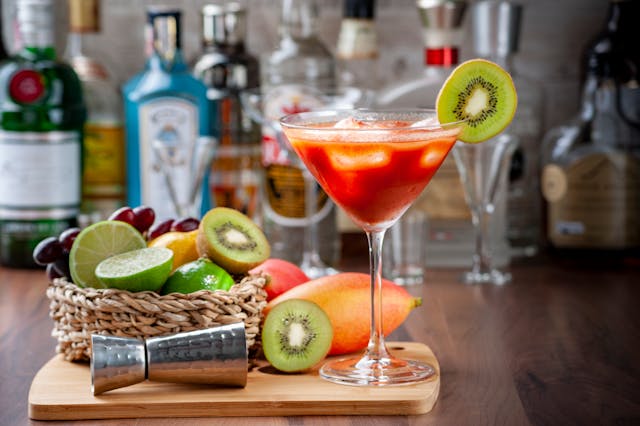一、Basic tasting steps
1. Observation of colors
Purpose: Observe and compare the color and transparency of the wine, and initially judge the quality of the wine.
Method: Pour the wine into a colorless and transparent glass and observe it under natural light. Pay attention to whether the color of the wine is transparent and clean, and whether there are any sediments and suspended matter. Different types of wine have their own specific colors. For example, good wine may have a slightly golden color, which is clear and pleasing to the eye.
Note: Choose appropriate wine glasses (such as ceramic wine glasses) and pouring volume (such as 100-200ml), and avoid using disposable plastic cups and paper cups to avoid affecting the taste of the wine.
2. Smell the fragrance
Purpose: To feel the aroma of wine through the sense of smell and further judge the quality and flavor of wine.
Method: Hold the wine glass in your hand, let the aroma of the wine evaporate naturally, and then inhale gently to let the aroma of the wine enter your nostrils vertically. Pay attention to controlling the number of times you smell fragrance, generally no more than three times, to prevent the sensitivity of the nasal cavity from decreasing.
Note: Make sure the environment is quiet and wind-free, and there is no odor in the air, so as not to affect the accuracy of the scent.
3. Taste
Purpose: Feel the taste of wine through the sense of taste and comprehensively judge the quality and taste of wine.
Method: Take a sip of wine, let the wine stay in your mouth for a moment, and fully feel the changes in taste. Sweetness is usually experienced first, followed by sour and salty flavors. Pay attention to tasting with heart and concentration, and fully mobilize the taste and smell nerves.
Note: When tasting, you should follow the three steps of “sip, sip, and haha”, that is, take a small sip lightly, smack your lips gently to taste the wine, and breathe quickly to let the wine odor emit from the nasal cavity to fully experience the aroma and taste of the wine.
4. Aftertaste
Purpose: Comprehensive appreciation of the aftertaste and aroma of wine in the mouth.
Method: After swallowing the wine, exhale slowly and feel the blend of various aromas in the mouth and nasal cavity. A good wine will have a long, lingering aftertaste and aftertaste.
二、Advanced tasting skills
1. The fragrance lingers in an empty cup
Method: After drinking the wine, leave the empty cup for a period of time (such as a few minutes to a few hours), and then smell the fragrance. The aroma of high-quality Maotai-flavor liquor lasts as long as two or three days, and the aroma is lingering.
Significance: Aroma retention in an empty cup is one of the important indicators for judging the quality of liquor, which can reflect the aroma components and brewing process of the liquor.
2. Identify the body of wine
Purpose: To judge the richness and mouthfeel characteristics of the wine through tasting and observation.
Method: Pay attention to the fullness and thickness of the wine in the mouth, as well as the softness and coordination of the wine body. Good-quality liquor usually has a rich body, rich aroma, and a pure taste without any odor.
3. Use technical terms
Purpose: Accurately describe and express the aroma, taste and quality characteristics of wine.
Commonly used terms: such as strong sauce aroma, prominent aged flavor, soft entrance, long aftertaste, etc. These terms help express wine tasting experiences and communicate tasting experiences more accurately.
三、Summary
Improving your wine tasting taste requires continuous learning and practice, and mastering basic tasting steps and advanced tasting techniques. Through the steps of observing color, smelling aroma, tasting and aftertaste, you can fully feel the quality and flavor characteristics of wine. At the same time, using professional terminology to accurately describe and express tasting experiences can help improve tasting levels and communication effects. Maintaining inner peace and a happy mood during the wine tasting process is also an important aspect of enjoying the wine tasting process.

